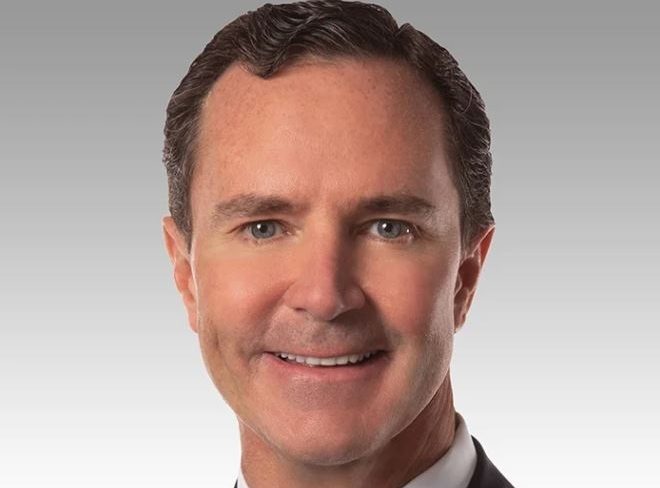MANUFACTURING
William Brown
3M Co., Maplewood, announced that Chief Executive Officer William M. “Bill” Brown has been appointed chairman, effective March 1, in addition to his current responsibilities. He succeeds previous CEO Michael Roman, who has announced his intention to retire as executive chairman and as a director. Roman has agreed to continue to serve as executive adviser to the board until May 1. 3M also announced that David Bozeman, president and CEO of C.H. Robinson Worldwide, has been elected to the board of directors, effective Feb. 6, and that Amy Hood, a 3M director since 2017, does not intend to stand for re-election at 3M’s 2025 annual shareholder meeting.
AIRPORTS
The Metropolitan Airports Commission announced the promotion of Isabella Rhawie to the senior executive team as vice president, commercial revenue officer. Rhawie had been the MAC’s interim vice president of revenue development since July 2024 and previously served as director of concessions and business development. MAC owns and operates Minneapolis-St. Paul International Airport and six general aviation airports in the Twin Cities region.
FINANCIAL SERVICES
U.S. Bancorp, Minneapolis-based parent company of U.S. Bank, announced that Felicia La Forgia and Sekou Kaalund will become members of its Managing Committee, overseeing the organization’s revenue lines, enabling functions and independent risk teams. La Forgia is head of the company’s Institutional Client Group; Kaalund leads the Branch and Small Business Banking team.
FOOD
Hormel Foods Corp., an Austin, Minn.-based provider of grocery store prepared food brands, announced the upcoming retirement of Mark Ourada, group vice president, Foodservice; David Weber, vice president of Foodservice sales, will succeed Ourada as group vice president, Foodservice.
HEALTH CARE
NMDP, formerly Be The Match, a Minneapolis-based national bone marrow donation registry, announced the hire of Alexander Rosenstein as general counsel and chief compliance officer and a new role for Erica Jensen, senior vice president of strategy and advancement. Rosenstein previously served as an officer at Fredrikson & Byron and was general counsel and corporate secretary at medical device manufacturer Cardiovascular Systems; Jensen will now also assume responsibility for the NMDP Foundation, succeeding Joy King, who recently joined the Animal Humane Society as CEO.
HONORS
Preston Spire, a Minneapolis ad agency, announced that for the second year in a row it has been named to Ad Age’s list of Best Places to Work.
LAW
Fredrikson, Minneapolis, announced that attorney Miriam Solomon has joined as an associate in its Litigation Group. Prior to entering private practice, Solomon was judicial law clerk to the Honorable David T. Schultz in the U.S. District Court for the District of Minnesota.
MEDICAL TECHNOLOGY
UroMems, a development-stage company working on a smart automated implant to treat stress urinary incontinence, announced that Dan Rose has been appointed chairman of its board of directors. Rose currently serves as the CEO of Endovascular Engineering. UroMems is based in France with U.S. headquarters in Minneapolis.
ORGANIZATIONS
The National Association of Women Business Owners Minnesota chapter has named Stephanie Lee as its president-elect. Lee will assume the role of president in 2026. Lee is managing director at Global Street Partners, a commercial real estate firm based in Minneapolis, which announced the appointment.
POLITICS
The Center of the American Experiment, a Golden Valley-based political policy advocacy group, announced that Vice President and Senior Policy Fellow Peter Nelson has been named by President Donald Trump to lead the Center for Consumer Information and Insurance Oversight. Nelson served in the first Trump administration as senior adviser to the administrator at the Centers Medicare & Medicaid Services.
TECHNOLOGY
GrandPad, a Hopkins-based developer of specialized tablets for seniors over the age of 75, announced that Chelsea Bakewell has been named chief customer officer. Bakewell’s previous roles with the company include director of member experience and senior director of customer success. … Inspectorio, a Minneapolis-based provider of supply chain software and services for retail, announced that Elizabeth (Liz) Pulos has joined the company as head of compliance, sustainability, and traceability innovation. Pulos previously was the director of global sustainability at Converse (Nike Inc.).
Related Articles
Business People: Joy King named CEO of Animal Humane Society
Business People: Chris Bent to lead Midwest autism services provider
Minnesota business owners in limbo: If enacted, Canadian tariffs could wreak havoc
Business People: MAC augments support leadership with former Cargill IT director Bill Boyd
U.S. Bancorp elevates President Gunjan Kedia to CEO, effective in April
EMAIL ITEMS to businessnews@pioneerpress.com.




